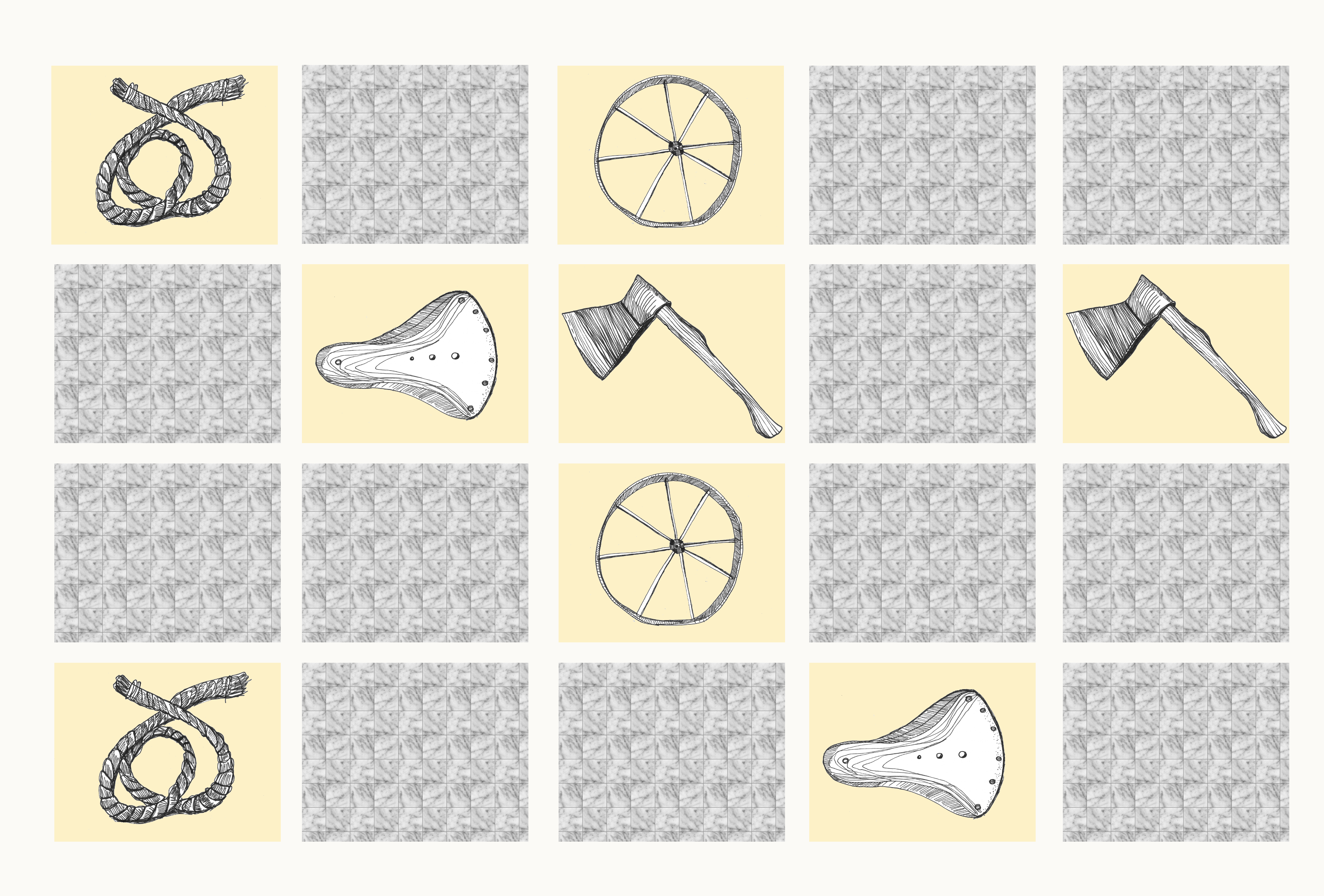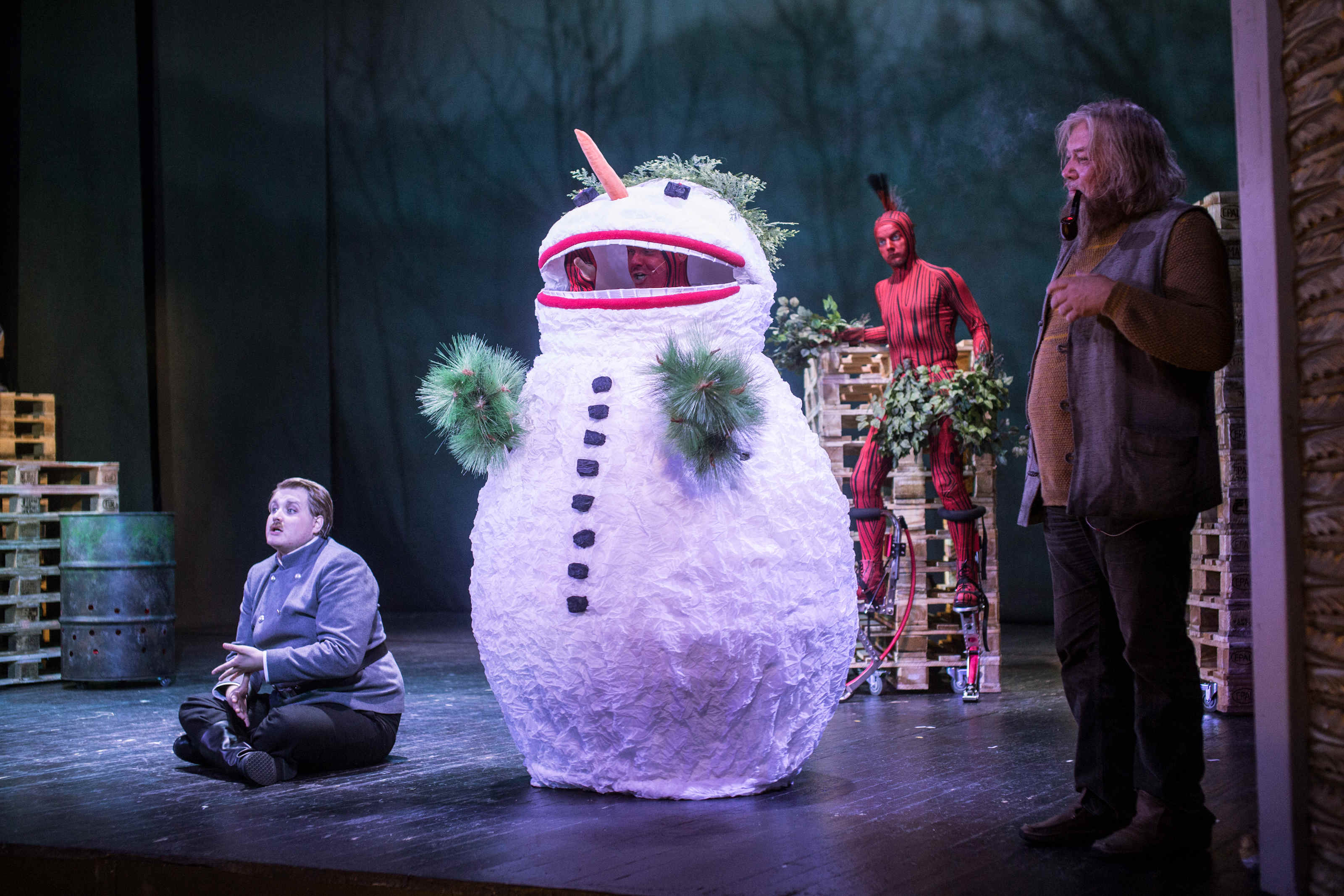Real/Unreal
Cinema is a very special form of art. On the one hand, we tend to believe everything we see on tape as if it was the evidence that something had really happened. On the other hand, every film, even the documentary, is somewhat artificial and also belongs to the realm of unreal. Like nobody else, the producers know this law and do their best to convince us. To make us cry, laugh or fall in love with imaginary characters, they mix reality and fantasy, combine documentation and artistic fiction. Rehepapp ehk November is no exception. Apart from telling a thrilling story, this film recreates the world that is tightly connected to Estonian culture and history. We invite you to discover the roots of Rainer Sarnet’s inspiration in the material world of the past - and learn a bit more about tools, clothes and other objects.
“
The screen is limited by the perimeter of its sides and its surface. Beyond these limits the cinema world does not exist. But it fills the inner surface in such a way that the fictitious possibility of breaking through the boundaries is continually being created.
— Juri Lotman, The Struggle with the space
”
Game
What is it?
Find the matching artifacts and reveal interesting facts about them. What historical time they may belong to?
Cinema and Surrealism
Creators of films often use real objects to create something really unusual. The same method gave rise to the surrealism: in order to estrange everyday items and bring the viewer on the verge of dream and reality, artists painted illogical scenes with photographic precision or made collages out of photos. Mythological creatures in Rainer Sarnet’s film are created according to the same logics.
“
Surrealism lies at the heart of the photographic enterprise: in the very creation of a duplicate world, of a reality in the second degree, narrower but more dramatic than the one perceived by natural vision.
— Susan Sontag, On Photography
”
Game
Make your own Kratt
Kratt is an Estonian mythological creature that may be associated with golems, homuncles and similar fictional characters. Kratt can fly and is constructed of wood, hay and other household items. In order to animate the creature, its master has to give three drops of blood to the Devil - Vanapagan. Since each Kratt is created for individual purposes, it may look very different from the others.
How would your Kratt look like?
Gallery
Different versions of Kratt
As far as we are concerned, nobody has seen a Kratt yet. This allows illustrators, stage directors, film producers and other interpreters to use their creativity in full. In our gallery, we have collected different renderings of this mythological creature. Do they fit the depiction in A. Kivirähk’s novel? What is common?
- Film “Rehepapp ehk November”
- Illustration to „Rehepapp ehk November“ by Katariin Mudist
- Ballet „Kratt“ by Eduard Tubin, 1943-1944
- Cover of the French translation of “Rehepapp ehk November”
- Cover of the Eduard Tubin’s “Kratt”
- Film “Rehepapp ehk November”
- Board game “Rehepapp ehk November”
- Play “Rehepapp ehk November” in Vanamuine theatre
- Illustration to „Rehepapp ehk November“ by Masha Kanatova



